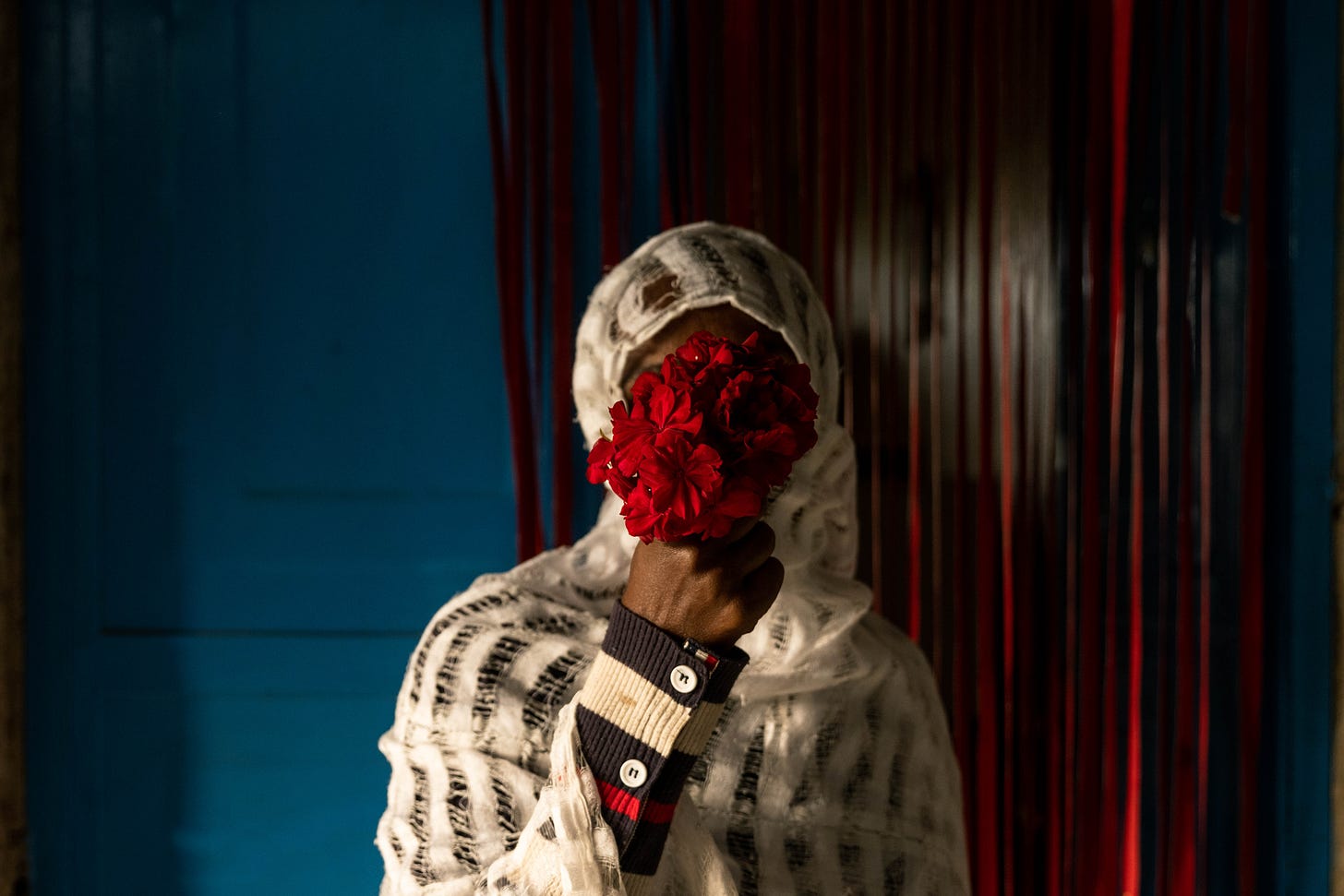
Journalistic challenges and ethical considerations in Tigray
Arlette Bashizi, a photojournalist from the Democratic Republic of Congo (DRC), faced significant challenges while documenting the conflict in Tigray, Ethiopia. “It was a bit hard to get a journalistic visa,” Arlette shared. As a young Congolese woman, Bashizi’s nationality often subjects her to additional scrutiny and skepticism from visa authorities who are more accustomed to granting such permits to Western journalists. Being a woman adds another layer of complexity as she navigates a male-dominated field, conflict photography, that is often biased against female journalists, particularly from Africa.
In her award-winning documentary photography project, “Survivors,” Arlette prioritizes the dignity and respect of the people she photographs. “I respect the person who gives me a responsibility to tell their story,” she tells me. Arlette understands the profound responsibility of telling someone else's story, often reflecting on how she would want her family’s experience to be portrayed in similar situations:
“After speaking with women while on my journey to Ethiopia for the first part of this story, I felt the same way as when I was talking to a survivor who lives in my hometown, Goma. I could empathize with their pain and their struggle, and that’s the aim of this project: to amplify the voices of all of these women.”
This ethical stance is crucial, especially in sensitive conflict zones, ensuring that her work does not exploit the suffering of the affected communities. Drawing parallels between the conflicts in the DRC, her home country, and Ethiopia, she emphasizes the importance of ongoing storytelling to keep the global community aware and engaged. “Someone must keep continuing to talk about the people’s experiences,” Arlette emphasized.
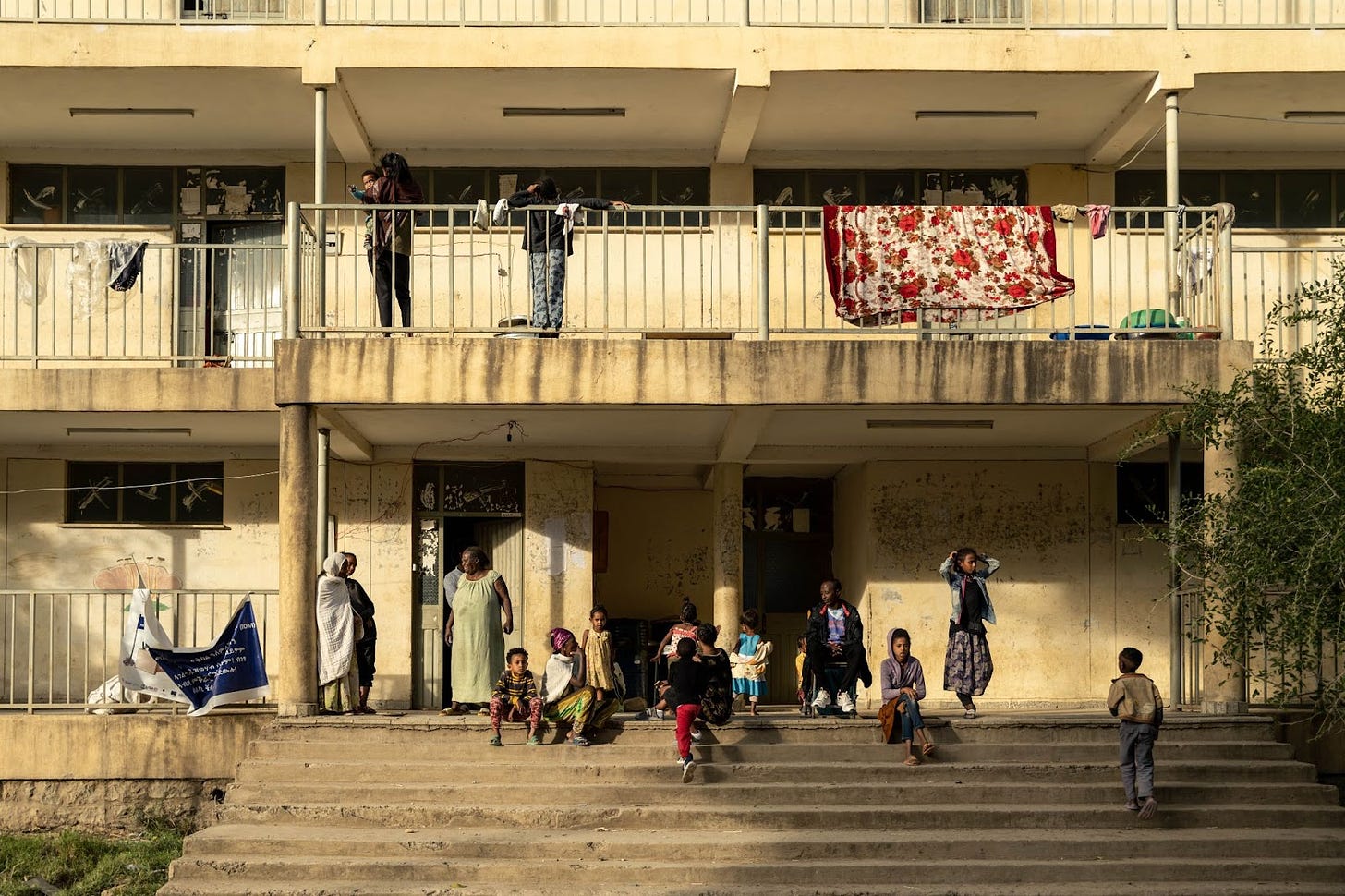
Arlette often had to rely on her resourcefulness, using simple tools like scarves, flowers, and lighting to capture compelling images while photographing people who needed to conceal their identities due to the consequences of the war. In one instance, she “used the lights coming from the window in the room where they were practicing culinary training.” Arlette describes how she intentionally chooses her location and poses to maintain their anonymity.
“I asked myself what I could use to be able to represent these women and take their portrait without showing their faces, but still create photographs that are visually strong which can represent what they are going through.”
This creative decision-making shapes her storytelling approach, making her more empathetic and respectful towards the people she works with.
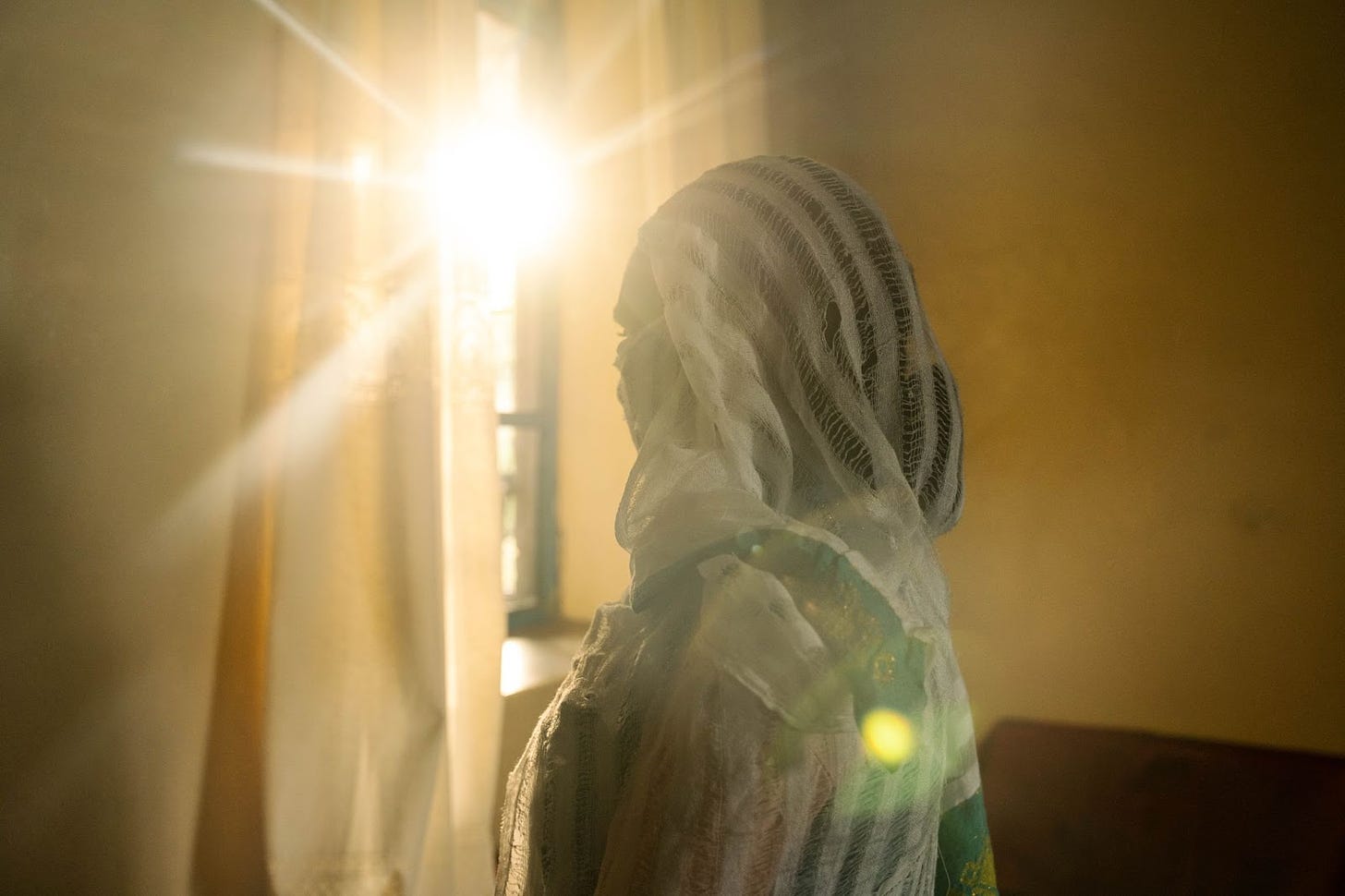
“As a woman born, raised, and living in a conflict zone area, I’m connected to the women I’m photographing because I’m one of them: I’m part of this community where rape is used as a weapon of war,” she says.
“Some of the women stay in internally displaced camps, others do not, and they haven’t told their family what happened to them. So I do not like to follow them to their home bases or houses. So what came to my mind was, let me look around in this common place where they come together, in this training center.”
Arlette makes a strong case for how location can aid ethical considerations, like a compass guiding her work, ensuring that her portrayal of the communities involved is deferential and truthful.
Managing risk in the Democratic Republic of Congo
Arlette’s decision to document the conflict in the DRC is deeply personal. As a young (24-year-old) Congolese woman who shares a connection to the stories of other women affected by the conflict, she views her role as integral to the narrative, not just as a photojournalist but as someone who is part of the story. “I was born in the war, and I’m now working, photographing the war,” Arlette says. This perspective enriches her work, providing a more intimate and authentic portrayal of women's experiences in conflict zones.
Accessing conflict zones in the DRC poses significant hurdles for Arlette. She has to navigate risk, understanding that her primary goal is to tell the story without endangering herself.
“I always make sure that the place I'm going or where I'm standing, I am safe. Because there is no need to put yourself in danger because you are looking for a specific kind of image or story angle…I've been trying to develop that instinct of leaving when things are not good anymore.”
Arlette’s cautious approach ensures she can continue producing her work safely while providing critical insights into the conflict. “When you are a freelancer, your security is first…I want the world to hear the story I am telling.”
Multifaceted narratives and balancing roles
Arlette aims to capture diverse narratives to present a comprehensive picture of documenting the conflict in the DRC. Reporting for The New Humanitarian, she engaged deeply with the people she photographed, learning about their culture, dreams, struggles, and perspectives not often shared by Western journalists, especially about the Congo.
In particular, Arlette detailed how Congolese artists use various art forms to help people cope with the mental and emotional stress of displacement due to the M23 conflict. In Goma, slam poetry sessions help people express their experiences and trauma, while dance performances bring joy and a sense of normalcy to displaced people living in camps. These creative initiatives provide a temporary escape from hardship and promote healing for a community going through a lot. This approach allows Arlette to portray not only the harsh realities of displacement and violence but also the resilience and efforts of local communities working to mitigate the effects of the conflict.
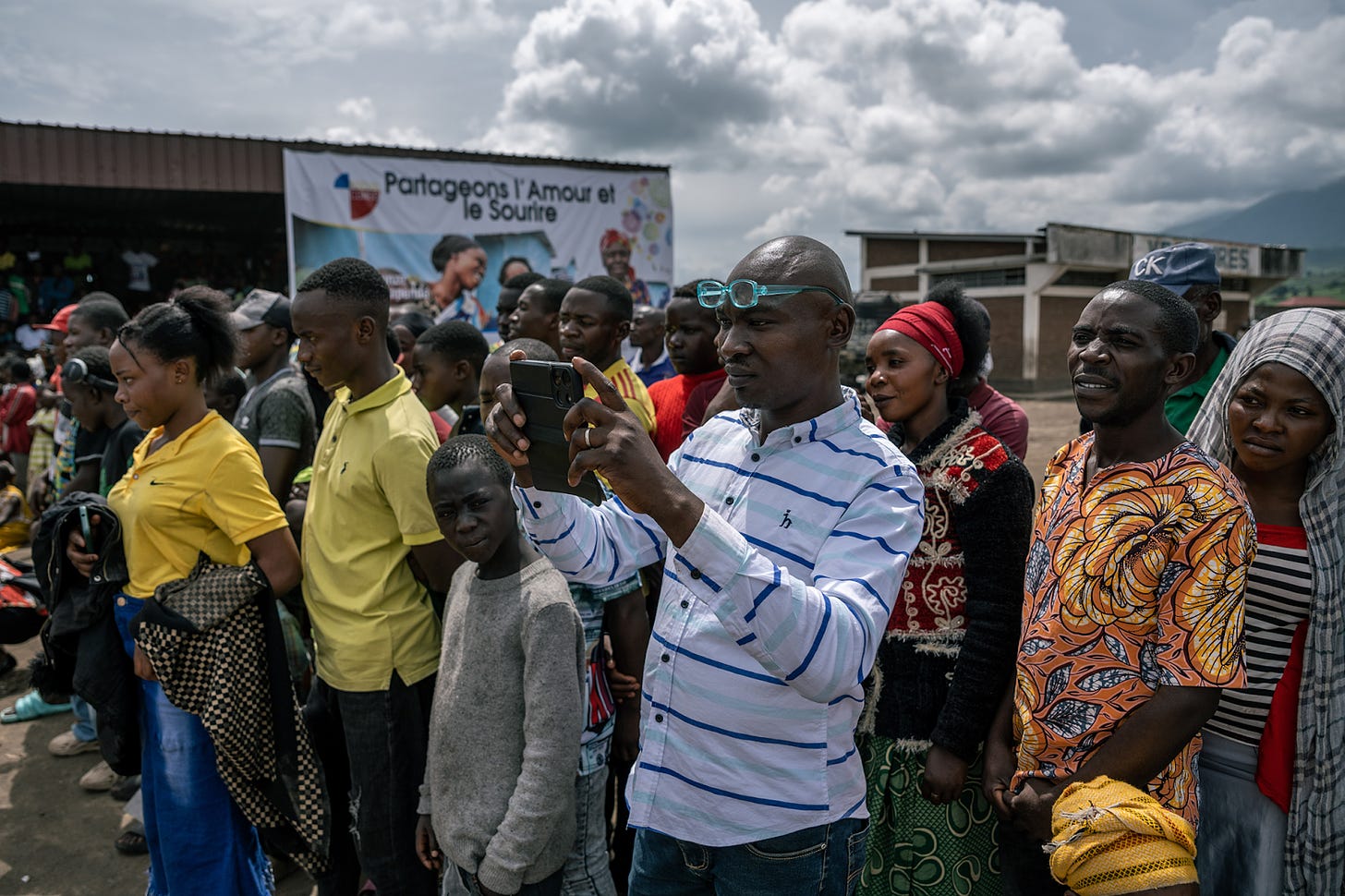
Balancing the roles of a journalist and a citizen in conflict zones can be challenging, and Arlette acknowledges that the line between these roles is often blurred. However, she emphasizes the critical responsibility of maintaining independence and objectivity in her work. She consciously tries to ensure that her stories and photographs are driven by truth and evidence, not personal sentiments.
“It's my responsibility. I only photograph and share facts, something which has proof, something which may be seen, not what I think, not my opinion. When working on a story, I just make sure that I'm not influencing the response of the people I work with or what they will say by keeping my opinion out of the work I'm doing.”
This dedication to factual reporting is crucial for maintaining the credibility and relevance of her work.
Contesting colonialism and patriarchy
Arlette articulates a profound vision for her work. Through her photography, she aims to continuously highlight the plight of women and children in conflict zones across Africa, reminding the world that rape should never be used as a weapon. As Robert Jensen writes in his powerful and courageous essay “Patriarchal Sex,”
“That we live in a world in which people continue to use the same word for sex and violence, and then resist the notion that sex is routinely violent and claim to be outraged when sex becomes overtly violent, is testament to the power of patriarchy.”
By photographing both the challenges and the resilience of these communities, Arlette hopes to raise global awareness about this violent consequence of war and conflict.
Racist and dehumanizing portrayals have long characterized the colonial photographic gaze on conflict and wars in Africa. Historically, photographers from colonial powers often depicted African people in a way that stripped them of their dignity and individuality, focusing on images of suffering and chaos without context, nuance, or sensitivity. This approach reinforces harmful stereotypes and perpetuates a narrative of African inferiority and helplessness, reducing complex human experiences to simplistic, exploitative visuals. “I always ask myself, what if this person was my sister or my mother or my brother? Should I be happy to see this person portrayed like this?” Arlette says. Even as she shares her work on global platforms like the Washington Post, The New York Times, The New Humanitarian, and others, her insider view and empathy are at the forefront of her practice. By focusing on the struggles and the efforts of local communities to overcome them, Arlette’s work challenges the dehumanizing legacy of colonial photography and offers a more truthful and empowering narrative.
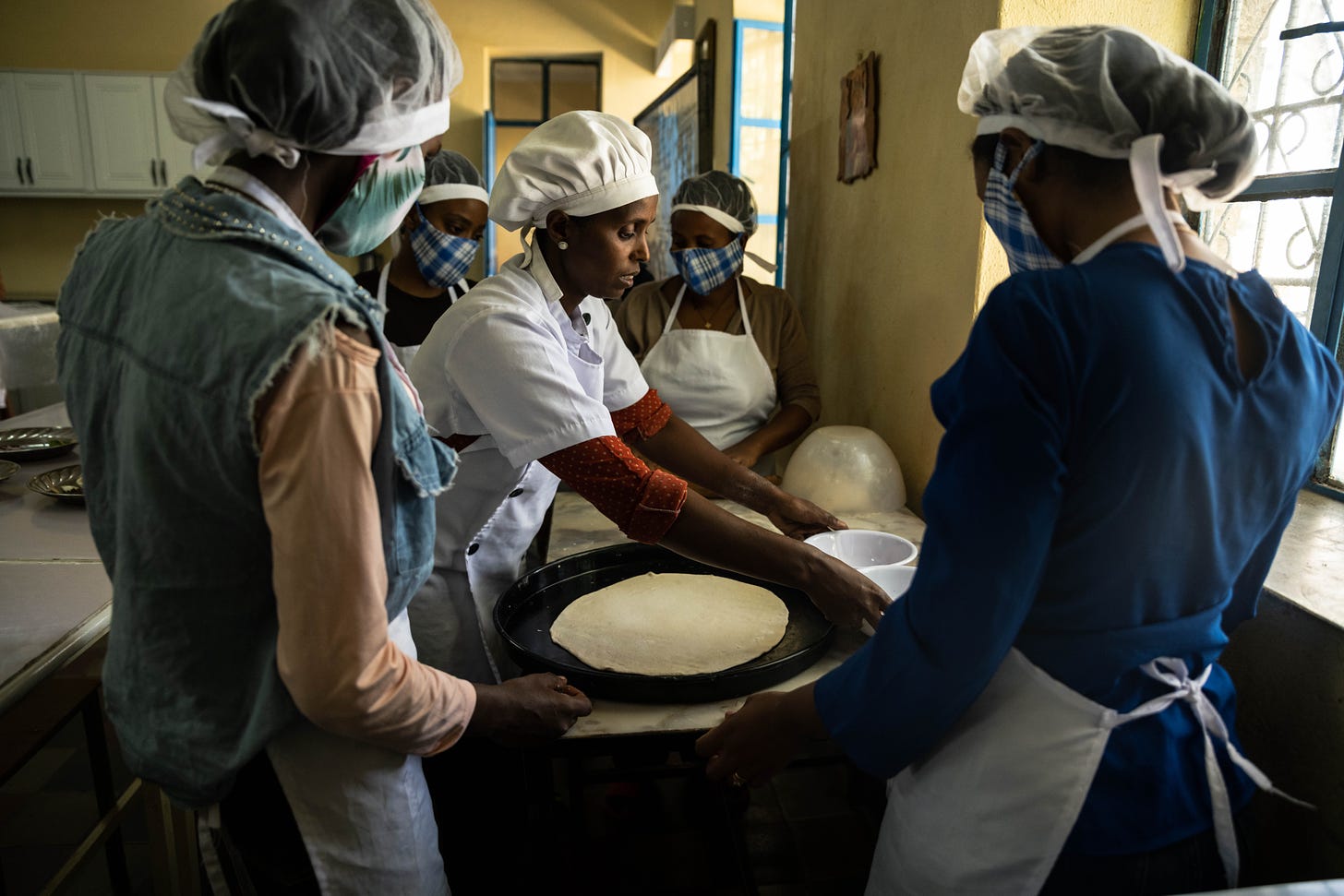
Future endeavours
In her future endeavors, Arlette plans to continue working on long-term projects documenting women's experiences in war-torn regions. She is currently making connections with local organizations in the DRC to start a new project focused on rape survivors. Her meticulous approach to building relationships with these organizations before beginning her work demonstrates her dedication to authenticity and collaboration.
By sharing stories from her community and highlighting the efforts of local initiatives, Arlette aims to provide a comprehensive and truthful account of life in conflict zones:
“I did a study with The New Humanitarian when this conflict in Goma started. I remember I talked to one of the activists, a member of the Goma collective. His point of view was, why do NGOs pay some international employees to come to Congo, teach people how to wash their hands, and they have big salaries. Instead of mismanaging that money, maybe they could support organizations like Goma collective, which are already trying to help communities with the little they have…I think the big NGOs have their place in this conflict, but I think it may be better to support local initiatives because many of those members of those local initiatives or local NGOs, also have their family and friends in those IDP camps. They have their brothers and sisters coming from different villages, so I think they understand better what they need, more than the international NGOs.”
Arlette’s work illuminates critical issues and honors the resilience and strength of those who endured the structural imbalances caused by the war.

Arlette’s work has gained recognition for its maturity and respectfulness, particularly in portraying women and children. It has won a post-conflict grant with the Aftermath Project, an Honorable Mention in the 2024 World Press Photo Contest, Africa, and a place in the 2024 Joop Swart Masterclass.
Despite her youth, Arlette’s approach to photojournalism is recognized for its depth and humanity. This sets her apart from many others in the field, particularly those outside Africa whose war photography sometimes lacks a nuanced understanding of the local context.
Even in the most challenging situations, Arlette’s commitment to producing respectful and dignified images has earned her admiration and respect. Arlette’s commitment to truth, respect, and human dignity in photojournalism sets a powerful example for others in the field, showcasing the vital role of local voices in the global storytelling of conflicts and wars in Africa.
This is the fourth article in Fiona Wachera's series Postcolonial Perspectives, which showcases new photography from Africa and visual stories that foreground embodied experiences and challenge colonial histories.
Wachera is a media strategist and the Storytelling and Content Specialist at The Aga Khan University. Their work blends hands-on design for photo, art direction, and media project management, utilizing varied communication mediums, design disciplines, and research techniques. Wachera has collaborated with storytelling teams at the World Press Photo Foundation, Black Women Photographers, Code For Africa, and the ICRC, amongst others.
Wachera’s previous articles are:
Postcolonial Perspectives: Jodi Windvogel on Femicide in South Africa
Postcolonial Perspectives: Etinosa Yvonne on Identity and Trauma in Nigeria
Postcolonial Perspectives: Ngadi Smart’s Curiosity



Such a strong, heartbreaking and moving body of work that hopefully will be seen far and wide.